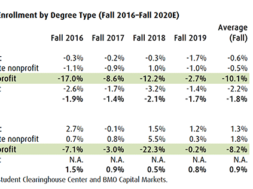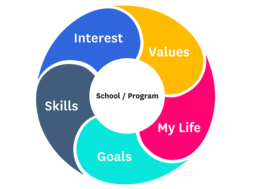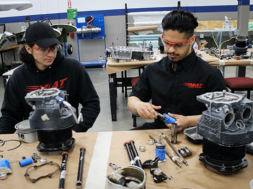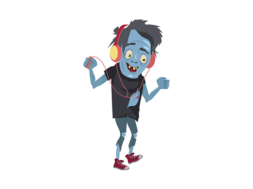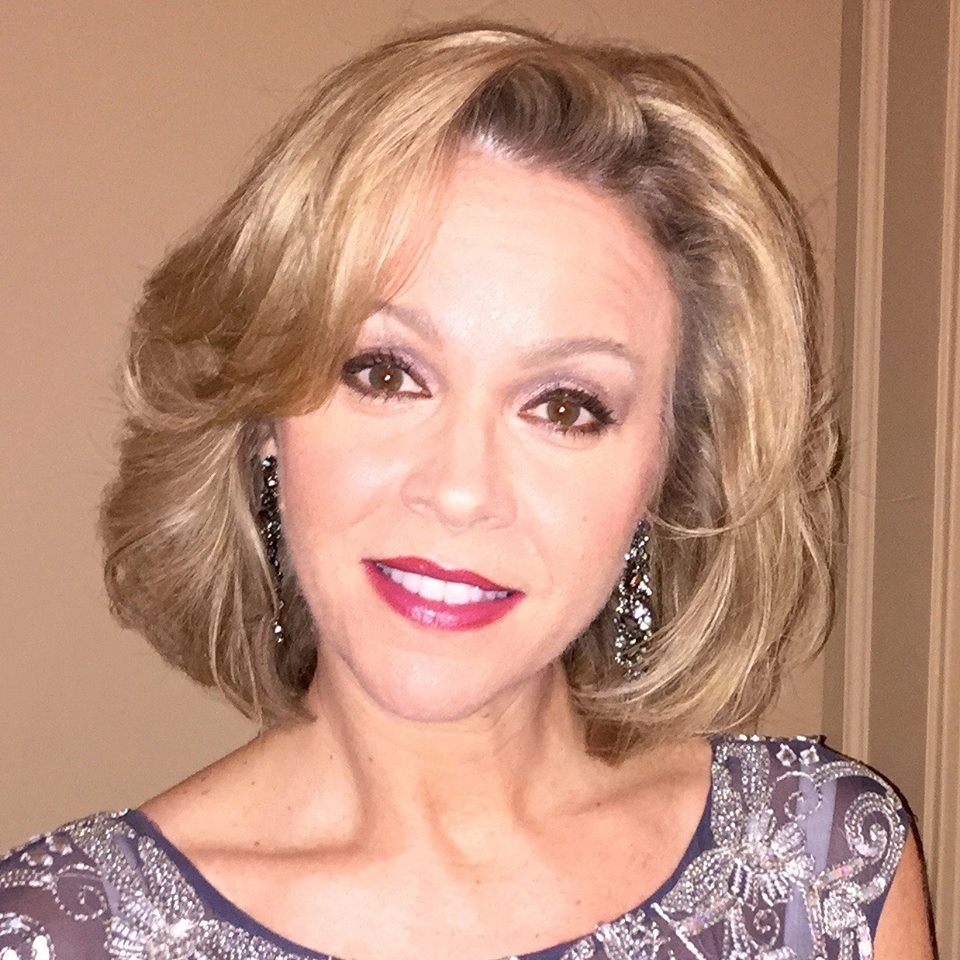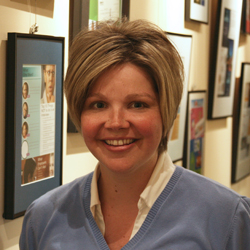
Advising for Fit: The Common Thread Between School Counselors and College Admission Professionals
By Shannon Gormley, Licensed School Counselor, Type 73/National Director of Enrollment Solutions and Dr. Jean Norris, Managing Partner, Norton|Norris, Inc.
A common theme seen when working in college admissions and high school counseling is the desire to make a positive impact on students’ lives and help in determining pathways to success in school and beyond. Both high school counselors and college admissions professionals are no strangers to the increased focus on student preparedness when it comes to post-secondary education and the options available. School counselors and college admission professionals have experienced a number of changes that have impacted their profession, such as increased expectations related to college and career readiness, professional challenges encountered in achieving those expectations, and identifying opportunities to improve student success and outcomes for all.
Increased focus on student fit
Helping high school and non-traditional students map out a meaningful plan for their future is a responsibility for both high school counselors and college admissions professionals. There is an increased focus on college and career readiness for both professions. The First Lady of the United States, Michelle Obama, introduced the Reach Higher initiative, to support President Obama’s “North Star” goal that by 2020 America would once again have the highest proportion of college graduates in the world. Reach Higher charges every student in America to take control of their future by completing their education beyond high school whether in a professional training program, community college, or a four year college or university. This increased focus on college and career planning is beneficial to all involved, because it emphasizes a plan for all students, especially those who choose to focus on career preparation rather than a traditional college path. In addition to helping students determine their plan, it is equally important to help them determine “fit” with regards to post-secondary planning.
In some cases, students look to their peers and popular opinion to influence their college and career decisions without fully considering their interests, skills, and abilities. Helping students to understand how they might fit at an institution can have a huge impact on their success. In turn, proper alignment also benefits an organization with improved student retention – a win-win situation for all parties. It’s important that students have the opportunity to determine the criteria that is important to them when deciding on post-secondary plans, especially for first generation students.
High school counselors and admission professionals have a unique opportunity to work together to link up college and career expectations with educational and vocational requirements to help students and their families gain an understanding of the next step.
Growing expectations of high school counselors and college admission professionals
For those of us fortunate to work with school counselors and college admission professionals, the message is clear. College provides a distinct advantage and yet many people opt out of pursuing this path. In many cases, this is due to misinformation, fear, and/or the inability to maneuver the college search process. It is almost easier to understand how an adult seeking to pursue higher education could feel this way but a high school student has direct access to a counselor and guidance office. One would think all they had to do was simply schedule an appointment and be on their way. Well consider this.
As with any profession, a high school counselor juggles a wide variety of responsibilities on any given day, from delivering Developmental Guidance lessons to all grade levels; attempting to meet with every senior in their caseload regarding their post-secondary plans within the first eight weeks of the new school year; attending an assortment of staff meetings; addressing Individualized Education Plans (IEP) for special education students, prescribing disciplinary actions, implementing interventions to address multiple failures; helping freshmen manage the transition to high school; advising students regarding academic concerns; as well as following up with parents regarding their questions and concerns…and the list goes on!
Every minute of the busy school day is dedicated to helping students develop in three key areas: academics, career planning and social/emotional well-being. This can, at times, seem like a monumental task, especially given the number of students in the counselor’s caseload. It is recommended by the American School Counselor Association (ASCA) that a manageable student to school counselor ratio is 250 students to 1 school counselor. And yet the national average in the United States is 490 students to 1 counselor – nearly double ASCA’s recommendation! As a matter of fact, there are only 3 states in the country with student to counselor ratios lower than the ASCA recommendation; New Hampshire, Vermont and Wyoming (ASCA, 2016). While the Reach Higher initiative has increased the focus on college and career readiness, given the counselor’s multiple responsibilities and often unmanageable caseloads, it is extremely difficult to find the time for the individualized counseling needed for college and career planning for each student. This is where school counselors often times look to their counterparts in college admissions for assistance in guiding students.
Want to learn more about the best practices in advising career education students?
Join us June 8, 2016 in Orlando, Florida for the first annual Career Education Symposium. This event brings together admissions professionals from career colleges, community colleges as well as high school counselors to discuss challenges all experience when advising students on post-secondary options regarding career education. Additionally, the group will share best practices for serving “at risk” student populations and brainstorm ideas to move forward and improve outcomes for students and the admission professionals working with those students. Contact 312-262-7433 for more information or to register. Space is limited!
Admission professionals in the career college sector also balance a wide range of tasks including contacting inquiries; meeting with prospective students; managing a plethora of paperwork; and providing extensive follow up. Their work expands beyond high school seniors with a majority of prospective students coming in as first-time college-bound adults or those returning to college. These prospective students are primarily seeking alternate paths to higher education through short-term programs to enter a career field or move up in an existing career. The recruitment model oftentimes focuses on limiting information given to prospective students in an effort to entice them into visiting the campus. Typically an “interview” is required in which the admission representative asks questions designed to uncover obstacles to enrollment so solutions can be provided. A meeting with financial aid and a tour are typically provided in this 60 to 90-minute meeting.
The interview process has been used effectively for decades perhaps because the population wasn’t serviced well in high school or has been out of school for some time and now seeks guidance. The downside however, is that the approach has diminishing returns given the decline in prospective students scheduling and showing up for appointments. It is apparent they do not see value in this activity given they can get much of the information they need from other sources.
The “interview” also has not proven to positively impact student fit, student retention, or positive student outcomes. The approach also increases an institution’s risk for misrepresentation and compliance missteps.
In fact, career colleges have seen an unprecedented increase in lawsuits and consumer complaints that can, in part, be traced back to admission interview practices.
The community college also serves students seeking to pursue short-term, career-oriented programs yet, in sharp contrast, they have much more of a self-service model. Online resources are provided for a prospective student to research, apply, enroll, complete financial aid paperwork, and register for classes all without stepping foot on campus. In fact, getting in touch with a live person can be challenging. With budget cuts and public scrutiny on the allocation of money derived from consumer tax dollars, the concept of advising in admissions does not appear to be a priority. This can lead to poor student fit resulting in poor retention and poor resource allocation in the processing or paperwork.
Expanding services & partnering
Collectively, all groups working with students seeking alternate higher education options share a common theme: To Provide Meaningful Services to Improve Student Accessibility & Fit. But how do these groups make this happen when seemingly coming from different worlds? It is time to move beyond the differences of for-profit/non-profit, in-state/out-of-state, public/private, and traditional versus non-traditional and focus on the bigger picture. There are clearly enough students to go around to achieve the goals of Reach Higher and prospective students can choose the best fit for them with meaningful guidance. To bridge the gap there are 4 angles that we recommend.
- Learn best practices in student advising. Those working with high school students in advising must complete a graduate degree in School Counseling covering topics such as Research in Counseling, Advanced Developmental Psychology, Group Dynamics and Counseling, Career Development Theory, Principals and Methods for School Counseling, Multicultural Foundations for Educators and Counselors as well as a Practicum and Internship in School Counseling in order to earn licensure. We are not suggesting admission professionals require this extensive training since they are primarily focused in the area of career counseling, BUT new training, skills and knowledge is required.
- Adopt pre-enrollment advising for ALL prospective students. Move away from the admissions interview of old to a more comprehensive and proven model that focuses on fit though examining student interests, abilities, and skills. This may be difficult for those in community colleges given their lack of resources in meeting with students. For those working in career colleges the challenge may be balancing the requirement for volume of enrollments over quality fit. In this case, it is essential to understand the longer-term benefit of student retention and positive student outcomes (Not to mention reduced risk of lawsuits).
- Provide services in the proper mix of personal and online resources. Beyond learning new skills, it is important the services are aligned with how consumers choose to experience them. Perhaps a mix of the community college and career college model would work best here by having information readily available online and the option to connect to a trained professional.
- Communicate and educate high school counselors on your process and role. Take any opportunity to demonstrate the valuable resources your institution offers and how they might benefit not only the high school counselor but the student population that s/he serves, too.
As former admission professionals we have had the privilege to work with colleagues seeking to change student’s lives. The passion is the same for secondary education school counselors as they work tirelessly to assist students in planning for their future. If the student is truly at the center of our work then it is time to work together to make that happen in a more meaningful way.
Resources
Green, K., Jaschik, S. and Lederman, D. (2011). The 2011 Inside Higher Ed Survey of College & University Admissions Directors. Retrieved from https://www.insidehighered.com/news/2012/01/19/community-college-counselors-face-challenges-survey-shows
Hopkins, K. (2011, October 20). Study: More Students Apply to More Colleges. US News & World Reports. Retrieved from: http://www.usnews.com/education/best-colleges/articles/2011/10/20/study-more-students-apply-to-more-colleges
Obama, M. The White House President Barack Obama. Reach Higher. Complete Your Education. Own Your Future https://www.whitehouse.gov/reach-higher
Student-to-School-Counselor Ratio 2013-2014. [Graph illustration the “State Non-Fiscal Public Elementary/Secondary Education Survey]. US Department of Education, National Center for Education Statistics, Common Core of Data (CCD). Retrieved from
http://schoolcounselor.org/asca/media/asca/home/Ratios13-14.pdf
Dr. Jean Norris is the leading advocate for the admissions profession and is often called upon to speak at national conferences, commencements, and organizational retreats. Her research, articles, and interviews can be found in many well-known publications serving the sector.
She began her educational pursuit in a 10-month medical assisting diploma program and went on to earn a B.A. in Management from National Louis University; a M.A. in Communication and Training from Governor’s State University and an Ed.D. in Organizational Leadership from the University of Sarasota. Jean is also a Licensed Master Neurolinguistic Programming Practitioner.
In her 28 year higher education career, Jean served in the role of admissions representative, dean of admissions, faculty member, academic dean, vice president of marketing, vice president of enrollment, and vice president of organizational development at private schools, colleges and universities. Currently Jean is a managing partner at Norton Norris, Inc., a Chicago-based marketing/consulting/training firm focused exclusively in the higher education sector.
Jean is the developer of EnrollMatch® – the ethical enrollment process, a comprehensive admissions training program offering proven results to balance compliance and performance. In 2015 Dr. Norris launched a patent-pending software that will transform the higher education industry entitled, My Guidance Coach® (MGC).
In 2012 Jean and her son, Mike, authored and published their first book entitled, “No Sugar Added – Straight Talk From Those Living With Diabetes” with all proceeds to benefit the Juvenile Diabetes Research Foundation (JDRF) in their search for a cure. The International Independent Publishers Association recognized their book with a bronze medal from amongst hundreds of titles submitted from 16 countries.
Contact Information: Dr. Jean Norris // Managing Partner // Norton|Norris, Inc. // 312-262-7400 // Jean@nortonnorris.com
Shannon Gormley began her career in higher education 17 years ago as an admissions counselor. Since then, she has served in the role of student activities director, student advisor, director of admissions, and executive director of graduate recruitment. Shannon went on to work in admissions training, serving as the director of training and EnrollMatch® Master Facilitator. She has worked extensively with Dr. Jean Norris in the development of EnrollMatch®, a comprehensive admissions training program offering proven results to balance compliance and outstanding performance.
After receiving her Master’s degree in School Counseling, Shannon worked in secondary education as a school counselor, assisting students in the development of their academic, social, and career pursuits, with a focus on college and career readiness. She earned her bachelor’s degree from the University of Wisconsin-La Crosse and her Master of Arts in School Counseling, from Lewis University and is a licensed school counselor with the state of Illinois.
Contact Information: Shannon Gormley // National Director of Enrollment Solutions // Norton|Norris, Inc. // 312-262-7433 // Shannon@nortonnorris.com



